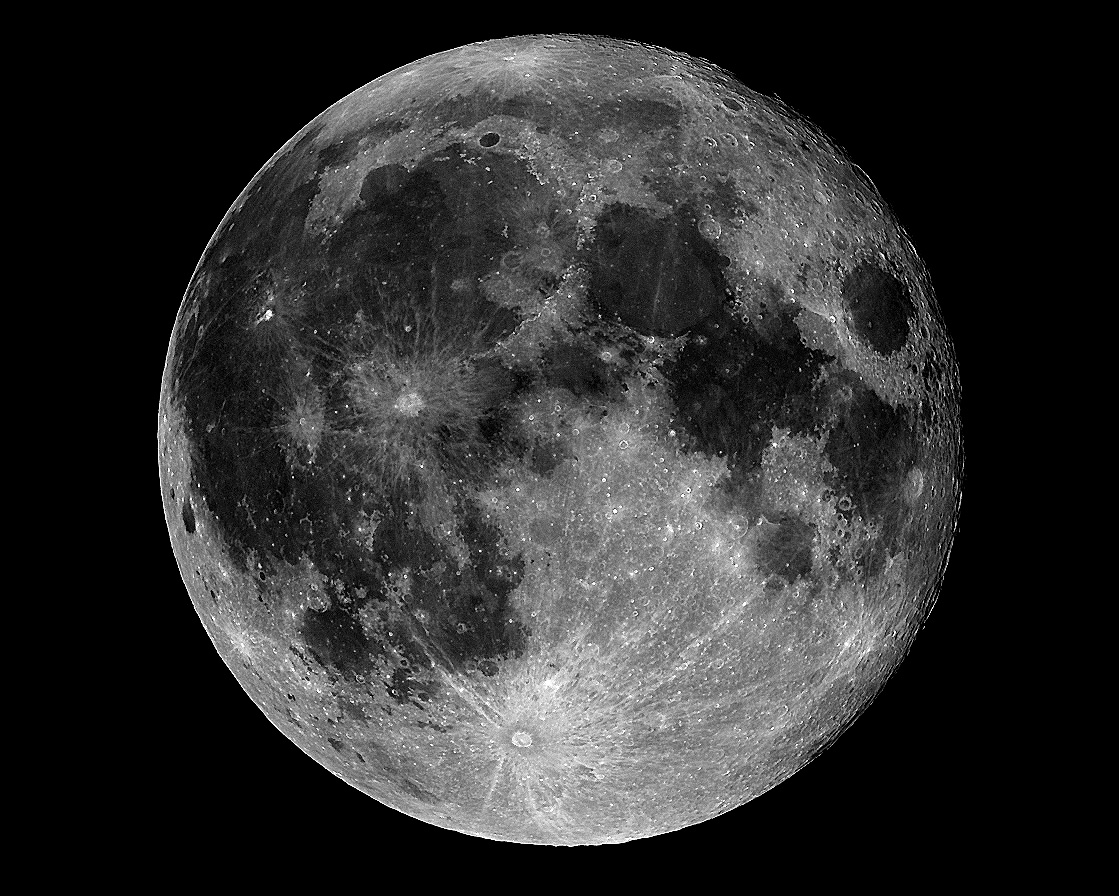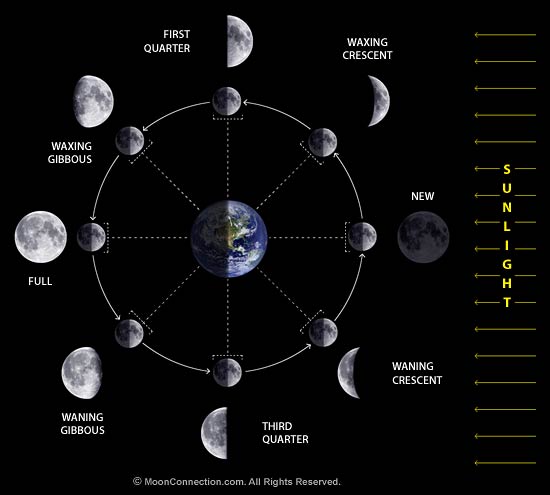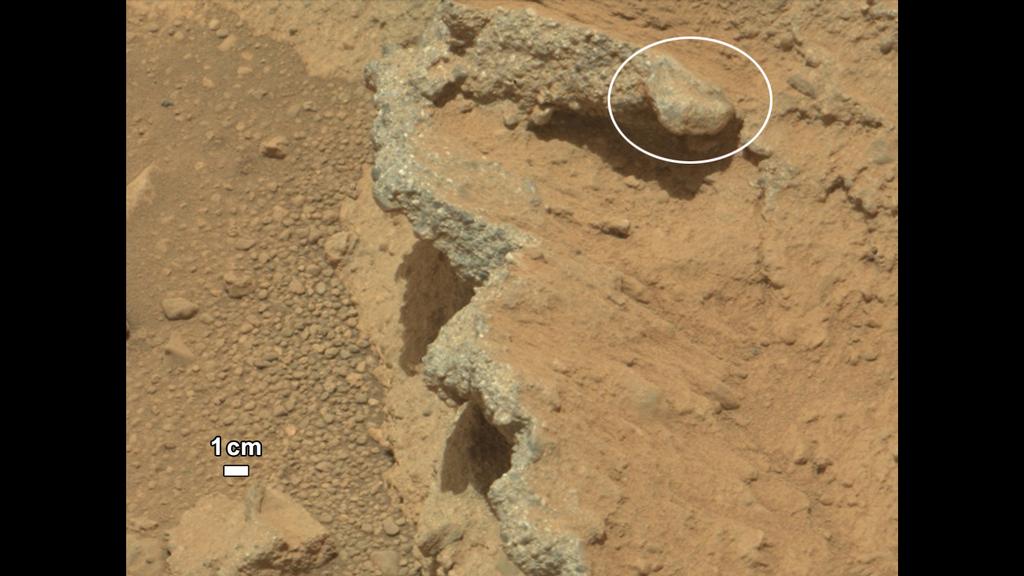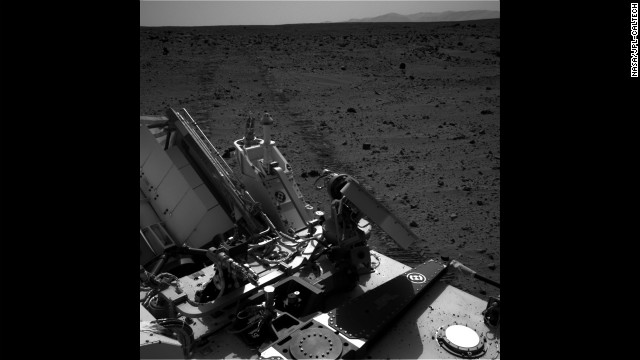Over the history of the Earth, people have been fascinated by the moon. Early civilizations believed the moon showed signs and explanations of the world. When the moon turned red, they knew war was coming. In recent years, scientists studied the moon, learning about these phenomenons. They studied eclipses and the gravitational pull of the moon, they even sent man to the moon. Scientists also studied what we see everyday, the phases of the moon.
The moon’s phases are what the moon looks like as we see it in the night sky. These different phases or “looks” of the moon are caused by sunlight hitting the moon while it orbits and rotates around the Earth. The sun always lights half of the moon. As the moon orbits and rotates we see different amounts of the lit side of the moon, causing a different phase.
 |
The different phases of the moon.
http://www.gwit.org/students/fremont/assign/moon/moonphases.jpg |
When you look at the moon, you will notice it always looks a little different every night. You could see only a sliver of the moon, a completely full moon, or even none of the moon. Those are only a few phases of the moon, the moon has eight different phases. It takes 29.5 days for the moon to go through all of its phases. The cycle starts with the new moon. A new moon is when the moon is aligned between the sun and the Earth. The sun lights the far side of the moon, the side we never see from Earth, leaving the side we see completely dark. As the moon starts to orbit and rotate , some of the lit half of the moon starts to appear and we see a small sliver of the moon. This is called the waxing crescent. When the moon travels one quarter of its revolution, it is at the phase called the first quarter. In this phase, we can see only half of the moon. The third phase of the moon is the waxing gibbous. Most of the lit part of the moon is showing, but a small part of the moon is dark. When the sun, Earth and moon align, the whole lit side of the moon appears. This is a full moon phase. The sun completely lights up the moon.
 |
A full moon.
http://apod.nasa.gov/apod/image/0001/fm1222_gendler_big.jpg
After the full moon, the phases we see of the moon start to become smaller or “wane”. As the moon orbits back to a new moon phase, the phases go to the waning gibbous phase, third quarter phase and then the waning crescent phase. The waning gibbous looks like the waxing gibbous. Almost the whole moon is lit. The third quarter, a.k.a last quarter, looks like the first quarter phase. And last, but not least, the waning crescent looks like its counterpart, the waxing crescent. Then, the moon orbits back to the new moon phase, completing its cycle.
|
 |
A diagram of the phases of the moon.
http://www.moonconnection.com/images/moon_phases_diagram.jpg |
As I said before, the moon takes 29.5 days to go through all eight phases. It seems weird, because the time it takes for the moon to revolve around the earth is only 27.3 days. Logically, people think, if the moon takes 27.3 days to revolve, the phases of the moon should take 27.3 days, the same amount of time. That would be true if the Earth didn’t revolve, but that’s not the case. The reason why it takes longer is because the Earth revolves around the sun while the moon orbits around the Earth. This offsets the time it takes for the phases of the moon than the time it takes for the moon to revolve around the Earth. This is a little hard to explain, but it is much easier to show visually.
.jpg)
In the picture on the top, it shows the moon revolving around the Earth, but the Earth isn’t revolving. After 27.3 days the moon has gone through all of its phases and done a full revolution. Now lets look at the picture on the bottom, in this picture the Earth revolves with the moon. It starts at the new moon phase. Then, the moon revolves around the Earth and the Earth revolves around the sun for 27.3 days. Which means the moon has done a complete revolution around the Earth. Unlike the picture on the top, at 27.3 days, the moon is not at a new moon, its is at a waning crescent. This is because when the Earth revolves around the sun it “offsets” the phases a little. It has to orbit another 2.2 days before it can get to the new moon phase.
In class, we learned all about the moon and its phases. We learned all of these concepts, and we usually learned them “hands-on”. One activity we did was to show us the concept of 27.3 days vs. 29.5 days. We had a styrofoam ball on a stick and a light. The styrofoam ball represented the moon and the light represented the sun. We imagined we were the Earth and revolved and rotated around. We could see the moon change its phases. It was very cool.
Learning about this subject gave me a better understanding about the moon and its phenomenons
 |
Moon in the sky
http://www.asklubo.com/uploads/attachments/published/8/1342/en/full-moon.jpg |











.jpg)









